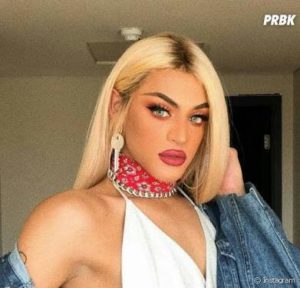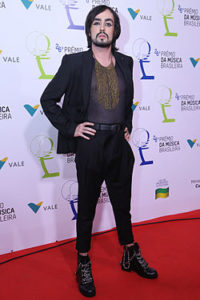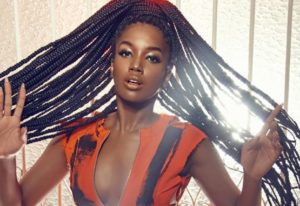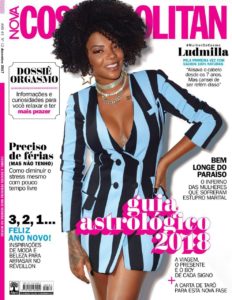Brazil is the world’s eighth largest economy and with that comes lots of opportunities for international marketers to tap into the new middle-class consumer market segments (Bajpai, 2018; Cavusgil, Deligonul, Kardes, & Cavusgil, 2018). The Brazilian middle class is well-educated, young, connected with global media and have discretionary income (Bajpai, 2018; Cavusgil, Deligonul, Kardes, & Cavusgil, 2018). Being in Sao Paulo, Brazil, I’ve been able to observe the popular culture scene and realized that fashion brands can do a better job at representing diversity and inclusion in Brazil by casting non-white supermodels.
Generally, Brazil is known for birthing some of the world’s most famous supermodels, such as Giselle Bundchen, Alessandra Ambrosio, and Adriana Lima. For instance, supermodels like Giselle Bundchen are at the forefront of the fashion world and represent Brazilian “beauty” in the global market, but her image of beauty does not represent the racially mixed population in Brazil. This begs the question: Why isn’t Brazil’s diverse consumer base represented in the fashion industry? In our course, we’ve discussed Dove’s beauty campaign and the definition of beauty, which got me thinking about how international marketers can tap into the growing middle-class consumer market that is not generally represented in the media. One way Dove and other brands can appeal to the Brazilians is by addressing more extensively the changing cultural perspectives on beauty in Brazilian society. For instance, there is an emerging LGBTQ community that is challenging what is traditionally considered female beauty. International marketers can tap into this growing trend by highlighting differences in their beauty/fashion campaigns and how this contrasts with the different ways people identify in Brazil. It is also important for marketers to understand the socioeconomic conditions in Brazil and how it affects people’s’ definition of beauty.
I want to give international marketers a few things to think about to appeal to the Brazilian market:
It is important for marketers to understand the changes in popular culture. For example, the music industry is changing the traditional (white, European, and heterosexual) definitions of beauty. Although in the U.S. the following examples would be considered socially acceptable, these iconic musicians are blazing the trail for Brazilian society’s changing cultural values.
 A great example is Pabllo Vittar, Brazil’s most popular LGBT singer, who is challenging and changing beauty standards. Vittar dresses in woman’s wear and wears makeup when performing on stage.
A great example is Pabllo Vittar, Brazil’s most popular LGBT singer, who is challenging and changing beauty standards. Vittar dresses in woman’s wear and wears makeup when performing on stage.
Another example is Johnny Hooker, a singer, producer, and actor who also wears makeup during his concerts. As a result, many gay males in the city are using makeup and other skin care products than ever before, which creates a market for beauty products. This is an opportunity for marketers to tap into this viable market that appeals to both females and males as made apparent in the music industry and cultural events in the city. Marketers should include diversity in their beauty campaigns and the different ways the various ethnicities in Brazil define beauty.
It is also important for marketers to understand popular culture and be aware of these nuances in how different people think about beauty. Another example is IZA and Ludmilla, who are both African-Brazilian pop singers who are changing diversity in the music industry and challenging the traditional definition of beauty. They represent a traditionally marginalized population in the media, which is important to raise awareness about Brazilian beauty.
However, there are a few challenges for marketers in implementing this kind of inclusive beauty campaign in Brazil. The first challenge is that these beauty campaigns might do well in larger cities, but it is unclear how they will do in smaller cities/towns. It is unclear how effective reaching diverse populations in remote regions in Brazil will be because certain media are not accessible in poorer regions (i.e. access to fashion magazines, cable TV shows, etc.). Therefore, it’s hard to gauge how far a social message campaign about beauty can travel outside of larger cities. The second challenge is getting major print publications (such as fashion magazines) in Sao Paulo and Rio de Janeiro to run fashion and beauty ads that feature a diverse range of models (ages, race/ethnicities, body shape).
Given these challenges, it is still worth the effort for marketers to engage in social cause marketing in Brazil by tapping into the cultural nuances of beauty standards in the country. It is important for beauty and fashion brands to show that they are reflecting and adapting to the changing attitudes worldwide. Do you think it’s worth it for beauty and fashion marketers to tap into the LGBT community in Brazil?
References
Cavusgil, S. T., Deligonul, S., Kardes, I., & Cavusgil, E. (2018). Middle-Class Consumers in Emerging Markets: Conceptualization, Propositions, and Implications for International Marketers. Journal of International Marketing, 26(3), 94–108. https://doi-org.libproxy1.usc.edu/10.1509/jim.16.0021
Bajpai, P. (2018). The World’s Top 20 Economies. Retrieved from https://www.investopedia.com/insights/worlds-top-economies/




One Response to “Real Beauty” an untapped market in Brazil/ implications for international marketing